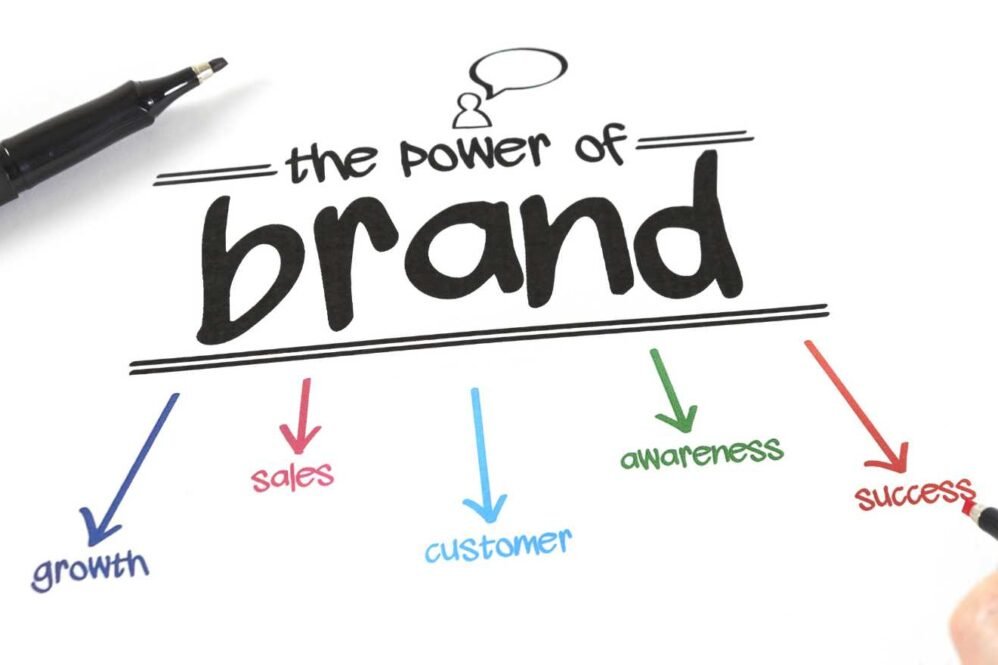Table of Contents
Why Freelancer Brand Identity Matters
Establishing a strong personal freelancer brand identity is crucial for freelancers who want to stand out and succeed in a competitive market. Unlike full-time employees, freelancers cannot rely on a company’s reputation when trying to win clients. Everything rests on your own name and expertise.
That’s why consciously building your freelance brand is so important. This article will walk through key strategies to help you craft a brand identity that resonates with your ideal clients and positions you as a top contender in your field. We’ll cover how to define your niche, create a memorable personal brand, build an impressive online presence, showcase your best work, and measure results over time.
With some thought and effort, you can develop a distinctive brand that communicates who you are, what you offer, and why clients should hire you over other freelancers. A compelling brand is an investment that can help attract a steady stream of business while allowing you to command higher rates over the long term. Let’s explore how to stand out in the freelance crowd and get your services noticed.

Know Yourself
The first step in building your unique freelancer brand identity is to take time to reflect on your skills, values, and interests. Think about the work you most enjoy and the projects where you’ve excelled. Make a list of your hard and soft skills. What do you love to do? What energizes you? Understanding your own strengths, motivations, and ideal work style is key.
Also, take time to outline your ideal client avatar. What types of clients would you love to work with? Consider demographics like industry, company size, budget, and personality traits. Get very specific on the details here. Defining your ideal client is crucial so you can tailor your brand and marketing to attract the types of clients you want to work with most.
Reflecting on your skills and interests and clearly defining your ideal client will provide a strong foundation for building your personalized freelancer brand. With self-knowledge, you can establish a brand identity and niche that allows you to do your best work and attract the right opportunities.
Define Your Niche
Focusing on a niche is one of the most important steps in building your personal brand identity as a freelancer. With so many talented professionals out there, it’s essential to distinguish yourself by developing specialized expertise in a particular area. Rather than trying to be a jack-of-all-trades, identify a specific niche that aligns closely with your natural skills, interests, and experience.
When defining your niche, avoid casting too wide of a net. Being too broad makes it difficult for potential clients to understand exactly what you do. Narrow your focus so you can position yourself as an expert who goes deep into a topic, not just dabbles lightly. Think about what makes you truly unique and passionate. What value can you provide that generalists cannot?
By identifying a niche, you can tailor your portfolio, services, messaging, and marketing to attract the right type of clients. This enables you to compete against others in your specialty rather than fighting for business across a crowded, generic landscape. When done effectively, niching down helps you stand apart in a positive way. It allows you to own your niche and become recognized as a go-to authority in that area.
Create a Memorable Name
The name you choose for your freelance business is one of the most important branding decisions you’ll make. Your business name needs to be unique, memorable, and aligned with your brand identity.
When brainstorming business names, aim for a name that is:
- Short, simple, and easy to remember
- Distinctive enough to stand out
- Communicates your key skills or niche
- Matches your brand personality and image
- Available as a domain name and on social media
Avoid overly complicated or confusing names. While creative names can help you stand out, they shouldn’t be so obscure that clients can’t remember or pronounce them.
You’ll also want to check that your desired business name doesn’t conflict with any trademarks or existing businesses in your field. Do a quick search to see if the name is already in use.
Some examples of memorable freelance business names:
- The Content Smith (content marketing)
- Clear as Jane Copywriting (copywriting)
- Code with Carrissa (web development)
The name you choose will represent your brand as you network and market your services, so put thought into finding one that captures your skills and personality. A unique, meaningful name can help your freelance brand identity be more distinctive and stick in potential clients’ minds.
Design Your Brand Identity
Visual branding is crucial for standing out and making your freelance business memorable. The key is to create visual elements that represent your brand and who you are as a freelancer.

Start by designing a logo. Your logo should be simple, clean, and convey what you do. Avoid overly complicated or cluttered logos. Pick 1-3 colors for your brand’s color scheme. Choose colors that reflect your personality and industry. Complementary colors work well.
Next, select 1-2 fonts for your brand identity. The fonts should align with your brand personality and be easy to read. Pair a simple sans-serif font with a more stylish serif or script font.
Make business cards, letterhead, email signature and other templates with your logo, colors and fonts. This brings consistency across your brand assets.
Create social media profile images and headers using your brand identity. Pick profile pictures and cover photos that represent you.
Consistency in your visual branding is key. People will come to recognize and remember your unique brand identity when you apply it uniformly across platforms. Distill your brand into simple recognizable elements that make you stand out from competitors.
Build Your Online Presence
Your online presence is the foundation for promoting your personal brand as a freelancer. A strong online presence allows you to showcase your skills, connect with potential clients, establish credibility, and control your brand narrative.
The key is to create a cohesive online footprint that reinforces who you are and the value you provide. Align your website, profiles, and social media so they work together to communicate your brand message.
Create a website
Your website is the hub for your online presence. Invest in a professional-looking site that reflects your brand identity and personality. Make sure your services, portfolio, credentials, and contact info are easy to find. Optimize your site for SEO with relevant keywords so you can be found. Include a blog to demonstrate your expertise.
Craft your profiles
Your LinkedIn, Facebook, Twitter and other profiles enable you to network with clients and talent in your niche. Craft descriptive profiles using keywords. Select profile images consistent with your brand identity. Share content to establish yourself as an industry insider.
Leverage social media
Strategically use social platforms like Instagram, YouTube, and TikTok to expand your audience and get your brand in front of potential clients. Post content like demos, tips, behind-the-scenes, and thought leadership tailored to each platform. Engage with your audience by commenting and sharing user-generated content.
An aligned online presence allows you to curate and share your brand story on your terms. With a website as your hub and supporting profiles and social channels, you can build authority and trust with clients seeking your services.
Showcase Your Best Work
Your portfolio is one of the most important tools for standing out as a freelancer. While most freelancers have an online portfolio these days, not all portfolios are created equal. You need more than just a basic website or profile listing your services – you need a portfolio that truly showcases your skills and experience.
Curate an online portfolio that demonstrates your skills and experience. Don’t just add every project you’ve ever worked on – carefully select your best and most relevant work. Organize your portfolio well, highlighting projects in your niche and the specific skills you want to emphasize. Make sure the portfolio is easy to navigate, visually appealing, and optimized for online viewing.
Include detailed project descriptions that provide context and explain your role. Quantify your results and impact when possible. Showcase not just the end products, but also your process, drafts, and behind-the-scenes work demonstrating how you deliver excellence.
Update frequently with new work samples. Rotate out projects over time so your portfolio always represents your current skills. Solicit testimonials from happy clients to include in your portfolio. Aim to tell a story about how you solve problems and deliver results.
Your portfolio speaks volumes about you as a professional. A polished, thoughtful portfolio tailored to your niche and specialties can help you attract clients and stand out from the freelancer crowd.
Promote Yourself
As a freelancer, you are your own marketing department. You need to strategically promote your services and share content that aligns with your brand identity.
- Create a portfolio website to showcase your work and skills. Focus on presenting your best projects and examples that are most relevant to your niche.
- Be active on social media, particularly the platforms where your target clients spend time. Share content like blog posts, videos, designs, etc. that highlight your expertise. But don’t just advertise – provide value.
- Guest post on industry blogs that reach your ideal clients. Secure contributor spots on reputable sites related to your field.
- Publish and distribute content marketing assets – an e-book, guide, templates, etc. – that build your authority and demonstrate your knowledge.
- Network online and in-person at industry events, conferences and meetups. Have a strategy for starting conversations and making connections.
- Run targeted ads on platforms like LinkedIn, Facebook, and Google. Test different audiences, offers and messages. Track results to optimize your marketing spend.
- Pitch journalists at relevant trade publications. Become a source for media stories related to your niche. Securing press coverage raises your profile.
- Enter your best work into industry awards and design competitions. Earning recognition brings prestige and reaches new audiences.
The key is to promote your services with intention, not randomly. Have a strategy aligned to your brand and goals. Track results and refine your approach over time. With consistent and creative marketing, you can stand out from the freelance crowd.
Network and Collaborate
Connecting with potential clients and partners is a great way to build your personal brand and get your work in front of new audiences. Look for opportunities to network both online and offline:
- Attend industry events, conferences, and meetups. Introduce yourself to others, exchange business cards, and connect on social media. Follow up with new connections afterward.
- Join professional associations and online communities related to your field. Engage in discussions and form relationships. Offer advice and help to build your reputation.
- Reach out cold to brands and businesses you’d like to work with. Don’t be afraid to make the first move and propose a partnership.
- Partner with complementary freelancers on projects. Cross-promote each other’s services and collaborate on content. Combining skills builds credibility.
- Guest posts and be interviewed on relevant blogs and podcasts. Contribute unique insights tied to your brand. Include links back to your website.
- Connect your website and profiles so colleagues can easily learn about you and sample your work. Make referrals and recommendations to extend your network.
The more you interact and exchange value with others in your industry, the more you’ll strengthen your personal brand identity. Look for strategic, mutually beneficial partnerships and collaborations.
Measure and Refine
As a freelancer, it’s crucial that you continuously track metrics and make adjustments to improve your brand over time. Here are some ways to measure and refine your freelancer brand identity:
- Track website analytics – Use Google Analytics or other web analytics tools to track traffic to your website, social media, and portfolio. Look at visitor demographics, acquisition channels, and engagement metrics. This will show you what’s working so you can double down on it.
- Monitor online mentions – Set up Google Alerts and social media monitoring tools to be notified whenever your brand or services are mentioned online. This allows you to join conversations and influence how others perceive your brand.
- Read reviews and testimonials – Look for feedback left by clients on freelancer platforms, Google My Business, LinkedIn, and more. Positive reviews boost credibility while negative ones show areas to improve. Actively request reviews from satisfied clients.
- Evaluate conversion rates – Calculate sales conversion rates for your services. If too low, rethink pricing, offerings, messaging, and sales process. High rates mean you can likely charge more.
- Review analytics from ads/campaigns – If running paid ads or outreach campaigns, dig into their analytics. See which platforms, ad types, headlines and targeting are most effective for you. Double down on winners.
- Set goals and benchmarks– Set specific, measurable goals and benchmarks for your brand – whether it’s revenue, leads generated, or social media followers. Track progress over time and adjust strategies to hit your targets.
By diligently measuring performance and fine-tuning your brand identity, you can maximize its reach, perception, and profitability over the long run. Refinement is key to standing out from the freelance crowd.
Search and Learn: Understanding the Relationship Between Logo, Identity, and Brand




